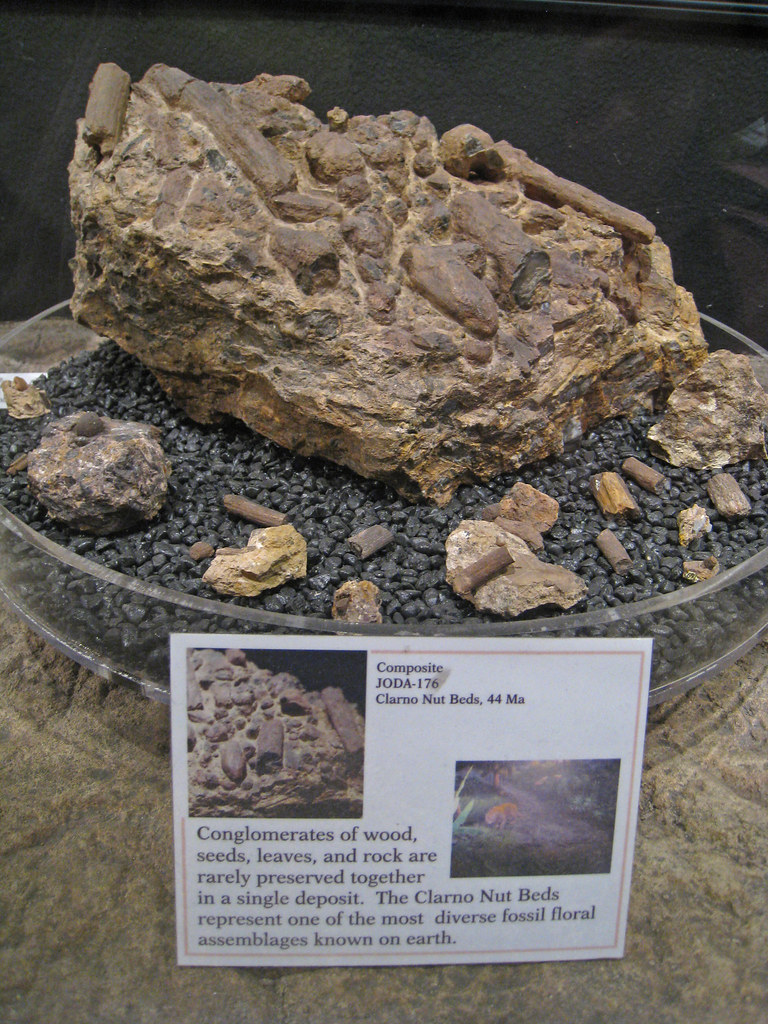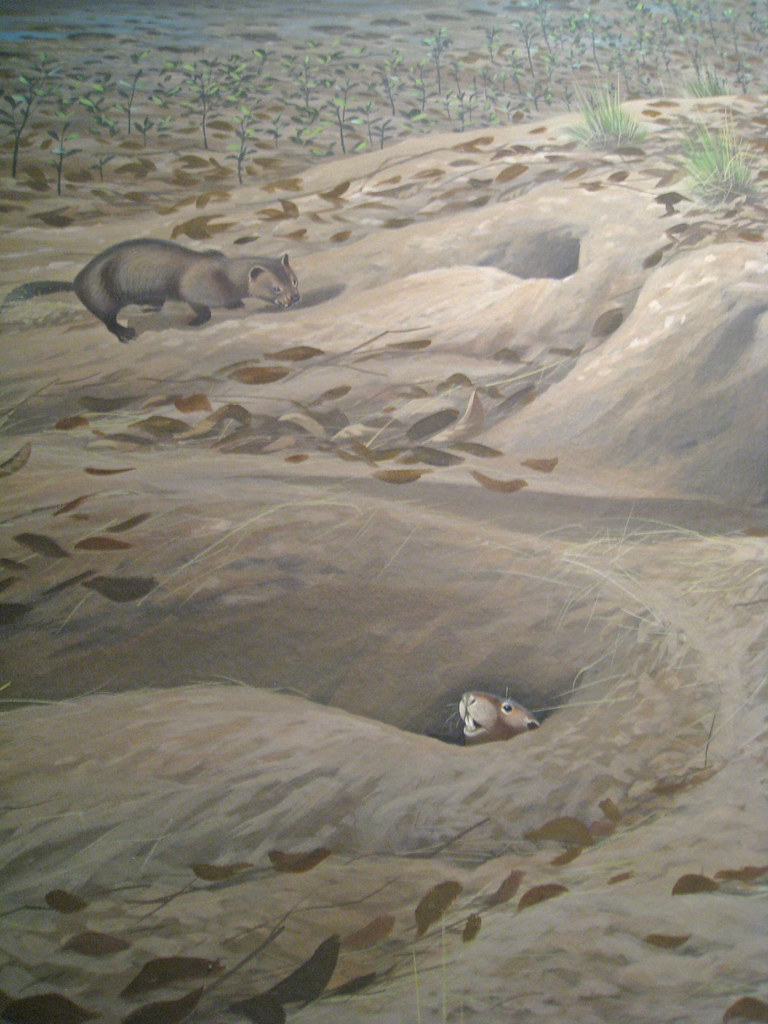Eastern Oregon Trip: Thomas Condon Paleontology Center
 |
| View of Sheep Rock from the parking lot of the Paleontology Center |
It was while we were in the John Day Fossil Beds National Monument that we left HWY 26 and turned north on Oregon HWY 19.
I was excited to visit the Thomas Condon Paleontology Center, two miles after our turnoff. I was reading Your Inner Fish
In 1859 Charles Darwin published The Origin of Species. Fossils were the big thing among a certain set. A minister and self-taught scientist in The Dalles, Oregon, Thomas Condon, heard about abundant fossils from soldiers in 1862, and in 1865 he began excavating fossils in this area. Condon eventually became a Professor of Geology at the University of Oregon.
 A few minutes after arriving at the center, a short movie about the John Day Fossil Beds and paleontology was announced. We learned there are fossil beds throughout 10,000 square miles of Eastern Oregon. The National Monument is 20 square miles of protected area. The John Day Fossil Beds in particular are very diverse. Six distinct ages ranging from 7 million to 44 million years ago can be found there. The fossil record is so reliable there that paleontologists around the world "are looking to this formation for correlation."
A few minutes after arriving at the center, a short movie about the John Day Fossil Beds and paleontology was announced. We learned there are fossil beds throughout 10,000 square miles of Eastern Oregon. The National Monument is 20 square miles of protected area. The John Day Fossil Beds in particular are very diverse. Six distinct ages ranging from 7 million to 44 million years ago can be found there. The fossil record is so reliable there that paleontologists around the world "are looking to this formation for correlation." I'd learned in Your Inner Fish that lava beds were not good places to find fossils because the molten lava destroyed the beings it killed, and that former sea beds were good places to find fossils. In this case, it was volcanic activity that created these profuse fossil records, but it was mud flow that covered over and smothered everything, and since it was so fast, it was like a snapshot of all the living beings at one time, encased in mud which became rock.
While Thomas Condon must certainly have kept a record of where he found fossils, these days paleontologists can keep notebooks with precise locations, times, and pictures printed on the spot. In this rich territory in Oregon, a paleontologist can find "an entirely new basin that no one has collected before."

I can't recommend enough visiting this place as part of your visit to Eastern Oregon. It can't compare to the American Museum of Natural History, but it is chock full of information, and because of the unique fossil record of the area, has a wide range of fossils, post-dinosaurs. Wall murals depicting the animals and plants as they may have looked line the walls (well-done, not hokey as I remember museum visits from my childhood) and the exhibits are displayed as if on exposed rock. I took a bunch of pictures to look at later but there are plenty of photos and other things to explore at the National Parks website. (I may have more description work to do with those photos of mine, so check back later.)





No comments:
Post a Comment